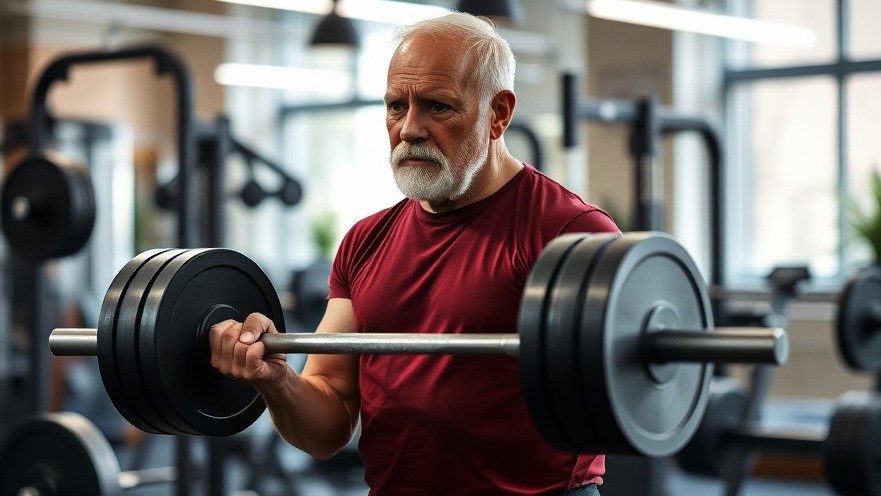
Understanding Deadlifts and Aging: A Balanced Approach
As we age, our relationship with fitness often evolves significantly. Particularly for exercises like deadlifts—beloved by many for their capacity to build strength—it's essential to reconsider their place in our routines. While some may feel inclined to push through personal bests and pursue high loads, there are compelling reasons to temper those aspirations with a more holistic view of health and longevity.
In Should You Stop Deadlifting at a Certain Age?, the discussion dives into the nuances of fitness as it relates to aging, prompting us to expand on key insights that can help individuals make informed decisions about their health and wellness.
The Dangers of Pushing Limits
Dr. Stuart McGill, an expert in spine biomechanics, emphasizes the inherent risks associated with heavy lifting as we age. Microfractures can accumulate over time with repeated exertion, particularly during demanding lifts like deadlifts. The demands placed on the body can lead to serious injuries if precautions are not taken seriously. Instead of striving for personal records, the focus should shift toward sustainable fitness habits that prioritize well-being over competitive edge.
Alternatives to Heavy Lifting
Interestingly, achieving your fitness objectives doesn't solely depend on heavy lifting. As discussed in a recent podcast episode featuring Dr. McGill, incorporating alternative movements such as single-leg exercises can be equally, if not more, beneficial for muscle activation without the risks associated with heavy deadlifts. These exercises not only reduce axial loading but also strengthen the stabilizing muscles that play crucial roles in overall functional movement.
The Importance of Mobility and Functionality
Peter Aia, who participated in the podcast, provides insight into how functional fitness should become a priority, particularly as we strive to maintain an active lifestyle into our later years. When weighing goals, one must consider whether it's worth risking one's joint health for the sake of lifting extreme weights. Rather than chasing merit badges of strength, envision goals like having the stamina to engage with one's grandchildren, which often requires different physical capabilities than maximal lifting.
Adopting a Holistic View on Health
So, how can we strike a balance? Embrace holistic health practices and consider a diversity of routines that include strength training while promoting flexibility, endurance, and mobility. Engaging in activities like monster walks or backward hill walking can build strength without placing undue stress on joints, ultimately leading to better outcomes for longevity and vitality.
The Role of Grip Strength as a Longevity Indicator
Research supports the idea that grip strength is a significant predictor of longevity, more so than lifestyle choices like smoking or family history of diseases. Whether it’s carrying groceries, splitting wood, or engaging in activities that require robust grip strength, these moments contribute to overall body health and serve as achievable standards of strength for aging populations.
Conclusion
Ultimately, it's crucial to consider adjustments to your fitness routine as you age. While the joy of lifting is undeniable, incorporating a broader scope of fitness activities may offer greater rewards in terms of health, function, and longevity. By prioritizing sufficient fitness over exhaustive perfection, individuals can maintain their ability to engage fully in life as they age. Now is the time to adopt a diversified and balanced approach to your fitness routine—it's better for your joints and your overall health.
 Add Element
Add Element  Add Row
Add Row 




Write A Comment